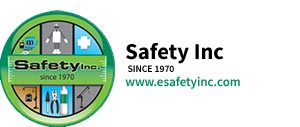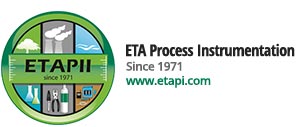Almost 20 years ago in 1994, Dräeger introduced the first electrochemical hydrogen peroxide (H2O2) sensor for monitoring low concentrations of vaporized hydrogen peroxide (VHP). Because of its bioactive capability of killing bacteria spores and other microorganisms, VHP became the substance preferred for decontamination and is used in filling machines, barrier isolators, glove-box work-benches and for entire rooms.
Description of Vaporized Hydrogen Peroxide (VHP) Detection
VHP is first generated by actively evaporating liquid hydrogen peroxide solution, vapor is then released or injected into a confined space. In order to generate a high decontamination rate of microorganisms, a high concentration of VHP is needed. Meantime VHP is rated as a hazardous substance for humans with a defined workplace limit value, so personnel outside the fumigated equipment require protection against inadvertently released H2O2 vapors. Following decontamination cycles the decline of H2O2 concentration by aeration and purging must be monitored to release the fumigated volume in order to allow people to safely enter, or to have new sensitive material brought in for processing. The mobile VHP generator which provides the vapor for the decontamination, can also be hazardous to personnel.

VHP is first generated by actively evaporating liquid hydrogen peroxide solution, vapor is then released or injected into a confined space. In order to generate a high decontamination rate of microorganisms, a high concentration of VHP is needed. Meantime VHP is rated as a hazardous substance for humans with a defined workplace limit value, so personnel outside the fumigated equipment require protection against inadvertently released H2O2 vapors. Following decontamination cycles the decline of H2O2 concentration by aeration and purging must be monitored to release the fumigated volume in order to allow people to safely enter, or to have new sensitive material brought in for processing. The mobile VHP generator which provides the vapor for the decontamination, can also be hazardous to personnel.
Therefore, H2O2 needs to be monitored for unwanted leaks close to or around generators and connecting hoses. A risk assessment of the installation has to be performed to comply with GMP requirements, to identify all potential hazards, define exposure control measures, relevant personnel protective equipment to be used and actions to be taken in case of a hazard.
Market segments include:
- pharmaceutical industry
- healthcare and hospitals
- food and beverage industry
- labs and clean rooms
- animal farming
- decontamination of heating
- ventilation air conditioning systems HVAC
- decontamination of freeze dryers

Safety targets are:
- Workplace safety
- Leak detection
- Release for safe entry and access
- Cycle parameter control
- Emission monitoring after filter and scrubber

Properties of VHP
VHP is a vapor, not a gas, which means the concentration in air can never be more than the vapor-pressure at a certain temperature. If the relative concentration reaches saturation (dew point) H2O2 vapor will start to condense as an aerosol or on any surface. H2O2 is completely soluble in water; for this application, solutions of 30% to 35 % H2O2 are in common. Since the evaporation of water is 15 times more effective than H2O2, the solution must be actively evaporated e.g. on a heat-plate, to get the H2O2 into the air. If H2O2 vapor hits condensed water, it goes into solution, and the VHP concentration in the surrounding air will decline. H2O2 is not a stable substance, it decomposes into oxygen and water, hence there is always a continuous loss of H2O2 concentration, therefore in the liquid solution stabilizing chemicals are added to keep the concentration stable. Because of active evaporation these stabilizers are also distributed into the fumigated volume.
H2O2 is a “sticky” substance, so one can observe a loss of concentration due to absorption and adsorption on surfaces; saturating a surface with a small VHP concentration takes much longer than a high one. Measurement is affected showing smaller readings, which is important to be considered in pumped systems where the tubing will absorb some H2O2 before it hits the sensing device. Dräeger measures H2O2 vapor as a volume concentration (ppmv short ppm)
Material compatibility
VHP is a chemically aggressive substance, so Dräeger transmitters and sensors are made of PA12 (polyamide 12 blend), a chemically resistive plastic, which shows no decomposing under the specified environmental conditions and the intended use. In cases of excessive VHP exposure only the sensor mouth should be exposed to the gas, with any use outside the specified conditions and intended use needing to be verified by the user of the equipment.
Calibration
Measuring systems need regular calibration because of the impact of unpredictable drift and loss of sensitivity over time. Due to its physicochemical properties, it is not easy to perform a calibration with hydrogen peroxide vapor, and VHP has to be generated with tools under laboratory conditions and verified with analytical equipment. This cannot be performed in the field.
Dräeger provides factory-precalibrated new sensors, with the calibration stored in the sensor memory. To recalibrate, the sensor can be taken out of the transmitter and shipped to a Dräeger service station for calibration with H2O2. In the interim a replacement sensor can take over measuring. Sensors are then returned with a calibration certificate indicating the reading before and after calibration.
Dräeger sensors for VHP have an accidental cross-sensitivity with sulphur dioxide. The empirical ratio between SO2 and H2O2 called relative sensitivity has a timely unpredictable tolerance, for new sensors the tolerance is ±10%. Therefore for safety and liability reasons a target gas calibration with H2O2 must be given preference over a surrogate calibration with SO2. Further performance specifications can be found in the sensor datasheets.
Dräeger Solution – Workplace safety and leak detection
A portable device carried on the body protects and warns from exposure where ever people move and what they are exposed to in the air, whereas a stationary device will monitor an entire area. It is essential to position stationary equipment in the best locations for alerting gas presence reliably and rapidly. To achieve this the gas distribution and convection has to be investigated and researched. To verify data, air flow pattern and streams can be made visible with help of the Dräger Flow Check.

A portable device carried on the body protects and warns from exposure where ever people move and what they are exposed to in the air, whereas a stationary device will monitor an entire area. It is essential to position stationary equipment in the best locations for alerting gas presence reliably and rapidly. To achieve this the gas distribution and convection has to be investigated and researched. To verify data, air flow pattern and streams can be made visible with help of the Dräger Flow Check.
Safe Entry Measurement and Cycle parameter control
A decontamination cycle for an isolated or clean room is divided in up to four phases. Dehumidification is the first phase in the fumigation cycle, in which air is circulated from the room through the dehumidifier to reduce the present humidity, which takes approximately 20 min. The next is the conditioning or ‘gassing’ phase, where VHP is actively injected into the room at a preset injection rate, allowing the concentration of VHP to be rapidly increased within the room to a predefined level, which normally takes 30 min. Next is decontamination, sometimes referred to as the ‘dwell’ phase, where a steady flow of VHP is maintained at a specific injection rate to ensure a constant concentration, for a predetermined time. During this phase the predefined process parameter must be applied to achieve the proven microbiological kill rate. The fourth phase, aeration, is the longest phase in the cycle (approximately 5 h). Injecting VHP into the room is halted, and air is circulated through a scrubber or filter or replaced by fresh air, in order to bring down the VHP concentration below predetermined thresholds.
This entire individual fumigation cycle must be qualified and validated during the commissioning by means of chemical (CI) and biological indicators (BI) which comply with GMP regulations. Time and injection rate are monitored parameters of a validated custom cycle.
To ensure safe access to the fumigated space at the end of the aeration phase, both DrägerSensors HC and LC are applied. The LC sensor will be protected by a controlled sampling system against the high concentration during the decontamination phase, while the DrägerSensor HC is used to monitor the high concentration cycle and control the start of the sampling system for the low concentration. In addition the HC sensor shows and monitors the fumigation curve.
Sensors should not be exposed beyond the max measuring range of the sensor, which leads to prolonged recovery time. Also the Dräger gas monitoring system must not be used for active control of the fumigation process!
Draeger Products
Martech Controls | Draeger Polytron 7000
see also:



